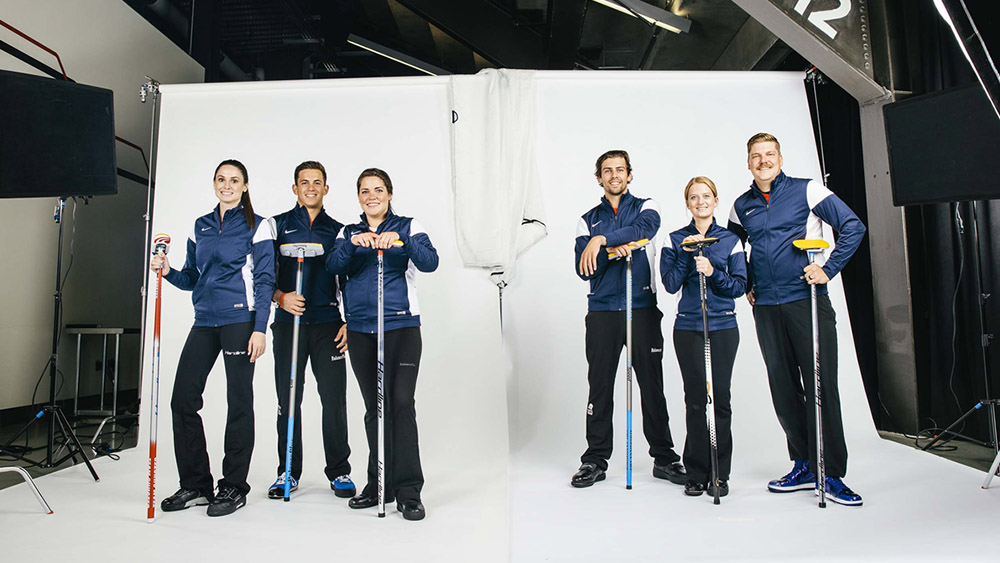Highlights
Annapurna Pictures has hired Michael Pavlic to the position of president of creative advertising, where he will oversee all marketing efforts by the studio for its upcoming films.
“Mike and I worked together for years at Sony where I was able witness his intrinsic dedication, intelligence, and kindness firsthand,” said David Kaminow, Annapurna’s president of marketing. “Those qualities, along with his incredible eye and ingenuity with creative ad campaigns, make him one of the best in the business, and I am looking forward to working alongside him once again.”
Pavlic, prior to signing on with Annapurna, worked at Sony Pictures as president of worldwide creative advertising.
Paramount Pictures has announced several promotions in its marketing department, after significant corporate structure changes in 2017. Irene Trachtenberg has been appointed head of worldwide marketing, Beth Pinker to senior vice president of field publicity and targeted marketing and Susannah Steinberg to vice president of field publicity and targeted marketing.
“These promotions are well-deserved acknowledgements of years of hard work and dedication by a team of people who are among the best at what they do,” said Rebecca Mall, co-president of domestic marketing, in a press release.
Phil McCarn has joined The Harlem Globetrotters as vice president of global partnership marketing, to build strategic alliances for the team as it enters its 92nd season of play.
“We are absolutely thrilled to welcome Phil to the team,” said Howard Smith, president of the Harlem Globetrotters. “Given his more than 20 years of experience and relationships, we anticipate his efforts will bring invaluable experience to the Harlem Globetrotters and expand our partnership initiatives to new levels.”
McCarn joins the Globetrotters from IMG College, where he worked as a sales leader for the Georgia Tech IMG sports marketing team.
Gimlet Media has announced the hiring of its first-ever chief marketing officer, Jenny Wall. In addition to overseeing all marketing efforts by the company, Wall will also handle audience growth.
“Jenny brings over two decades of entertainment marketing experience, with a proven track record for sparking cultural moments through stories that matter, from House of Cards to The Handmaid’s Tale,” Matt Lieber, co-founder and president of Gimlet, said in a statement.
Prior to signing on with Gimlet, Wall served at Hulu as head of marketing, overseeing the launches of The Mindy Project, Casual and The Handmaid’s Tale. Before Hulu, Wall worked at Netflix as vice president of marketing.
Taco Bell is expanding its executive team, bringing on Julie Felss Masino as brand president, a new role devoted to in-store sales growth and customer relations.
“We are proud of the momentum the Taco Bell brand has seen globally, and the continued growth here at home,” said Brian Niccol, CEO of Taco Bell. “We are expanding our leadership team and are excited to bring on Julie as Brand President to continue our success and innovation, with a renewed focus on technology and greater access to the brand for consumers.”
Masino joins Taco Bell from Mattel, where she led the company’s Fisher Price toy division. Previously, she spent over a decade in various leadership positions at Starbucks and served as CEO for Sprinkles Cupcakes.
Volkswagen of America has appointed Duncan Movassaghi to the position of senior vice president of sales, where he will be responsible for sales region management,
“We are excited to welcome Duncan to his new position. His strong automotive and sales background combined with his experience within the Volkswagen Group will be an invaluable asset as Volkswagen seeks to grow in the U.S. market,” said Derrick Hatami, executive vice president of sales and marketing for Volkswagen of America.
Movassaghi has been with the Volkswagen group since 2010, most recently holding the position of managing director for Skoda UK.
The Rest Of The C-Suite
(Editor’s Note: Our weekly careers post is updated daily. This installment will be updated until Friday, January 12. Have a new hire tip? Let us know at editorial@alistdaily.)
PromaxBDA, an entertainment marketing trade association, has brought on Jennifer Ball as head of marketing.
“Jennifer’s strategic, creative and background will provide leadership and inspiration to the association and its members as we enter a new and exciting time in our industry,” said Steve Kazanjian, PromaxBDA’s president and CEO.
Ball joins the organization from Univision communications, where she worked as executive vice president of marketing and content partnerships.
Glamour magazine has a new editor-in-chief for the first time in 16 years, as Samantha Barry is replacing the retiring Cindi Leive. This appointment indicates a shift in focus toward digital-first content.
Before leading Glamour, Barry has held roles for BBC World News and the Australian Broadcasting Corporation, and most recently as a social media executive producer for CNN.
Spotify’s chief content officer, Stefan Blom, will be stepping down from his position, as reported by Recode. This news comes just after the company reportedly filed for an unconventional IPO with the FTC, and may hint at looming trouble for the company.
Fox Networks Group has hired Colin McLeod for the role of general manager for its UK division, replacing Jeff Ford, who is shifting to a consulting role.
“Colin’s blended background offers a well-rounded and hugely valuable experience to our business, and we have no doubt he will step into the role and immediately have an impact,” said Diego Londono, COO of Fox Networks Group Europe and Africa.
McLeod is a veteran of NBCUniversal, spending ten years at the network, most recently as managing director for the UK and emerging markets.
Job Vacancies
| Product Manager – APIs | Ayzenberg | Pasadena, CA |
| VP, Digital Media & Content | CBS Films | Los Angeles, CA |
| VP, Brand Partnerships | Warner Bros. Entertainment Group | Burbank, CA |
| Sr. Director, Partner Marketing | Paypal | San Jose, CA |
| Director, Digital Marketing and CRM | TOMS | Los Angeles, CA |
| Director of Global Strategic Marketing | Johnson & Johnson | Raritan, NJ |
Make sure to check back for updates on our Jobs Page.


